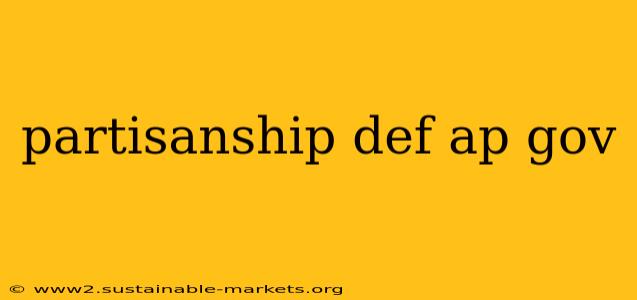Partisanship, the strong allegiance to one's political party, is a defining characteristic of the American political system. Understanding its impact is crucial for comprehending the functioning (or dysfunction) of our government. This analysis explores partisanship's definition, its historical evolution, its manifestations in various branches of government, and its consequences for policymaking and public trust.
What is Partisanship?
In its simplest form, partisanship refers to the strong loyalty a person feels towards their political party. This loyalty often transcends specific policy positions, leading individuals to prioritize party unity and success over other considerations. It's more than just agreeing with a party's platform; it's a deeply ingrained sense of belonging and identification. This can manifest in various ways, from voting consistently for one party to actively campaigning and donating to that party's causes.
The Historical Evolution of Partisanship in the US
The nature and intensity of partisanship in the US have fluctuated throughout history. The early republic saw less structured party systems, with factions emerging around key figures like Alexander Hamilton and Thomas Jefferson. The development of the first party system (Federalists vs. Anti-Federalists) laid the groundwork for the more entrenched party politics we see today. The rise of Jacksonian Democracy in the 1830s further solidified party organization and mobilization.
The late 20th and early 21st centuries have witnessed a significant increase in partisan polarization. This heightened polarization is often attributed to several factors:
- Increased ideological sorting: Voters increasingly align themselves with parties that reflect their core beliefs, leading to less overlap between the parties.
- Gerrymandering: The practice of drawing electoral district boundaries to favor one party can reinforce partisan divisions and limit competitiveness.
- Media polarization: The rise of partisan media outlets has contributed to echo chambers, where individuals are primarily exposed to information confirming their existing beliefs.
- Social media: Online platforms can amplify partisan messages and facilitate the spread of misinformation.
Partisanship's Manifestation Across Branches of Government
Partisanship plays out differently across the three branches of government:
The Legislative Branch (Congress):
- Legislative gridlock: Partisan divisions often lead to legislative gridlock, hindering the passage of even essential legislation. Compromise becomes increasingly difficult, as lawmakers prioritize party loyalty over bipartisan cooperation.
- Filibusters and cloture: The Senate's filibuster rule, allowing a minority to block legislation, is often exploited by the opposing party to prevent bills from reaching a vote.
- Party-line voting: Members of Congress increasingly vote along party lines, reducing the influence of individual legislators and weakening the ability of the legislature to effectively address national challenges.
The Executive Branch (The Presidency):
- Executive orders: Presidents often use executive orders to bypass Congress when facing partisan gridlock. This can lead to accusations of overreach and further exacerbate political tensions.
- Cabinet appointments: The selection of cabinet members is often driven by partisan considerations, potentially impacting the effectiveness of government agencies.
- Presidential rhetoric: Presidential speeches and communication strategies frequently emphasize partisan appeals, further polarizing the public.
The Judicial Branch (The Supreme Court):
- Judicial appointments: Supreme Court nominations become highly politicized events, with confirmation battles often reflecting deep partisan divisions. The ideological balance of the Court significantly impacts judicial decisions.
- Judicial decision-making: Although justices strive for impartiality, their individual ideologies can influence their interpretations of the law, leading to partisan outcomes in significant cases.
Consequences of Partisanship
The consequences of heightened partisanship are far-reaching:
- Decreased public trust: The constant political battles and gridlock erode public trust in government institutions.
- Policy gridlock: The inability to address pressing national issues leads to frustration and dissatisfaction among citizens.
- Increased political polarization: Partisanship creates a climate of division and animosity, hindering constructive dialogue and compromise.
- Erosion of democratic norms: Excessive partisanship can undermine democratic norms and institutions.
Conclusion
Partisanship is a complex and multifaceted phenomenon that has profoundly shaped the American political landscape. Understanding its historical evolution, its manifestations across different branches of government, and its consequences is crucial for navigating the challenges facing our democracy. Addressing the factors contributing to heightened partisanship requires a multi-faceted approach involving electoral reforms, media literacy initiatives, and fostering a culture of respectful dialogue and compromise. Only through a commitment to these goals can we hope to mitigate the negative consequences of excessive partisanship and strengthen our democracy.

